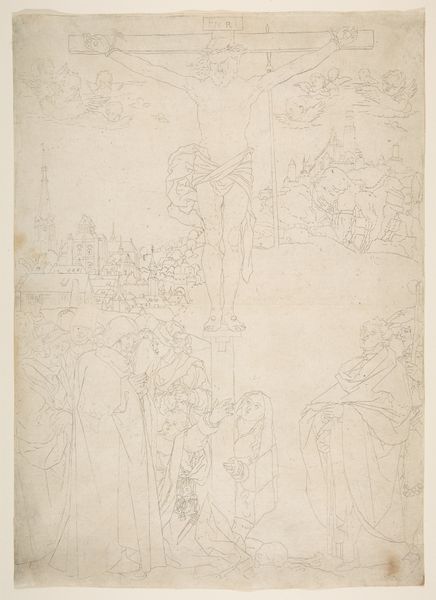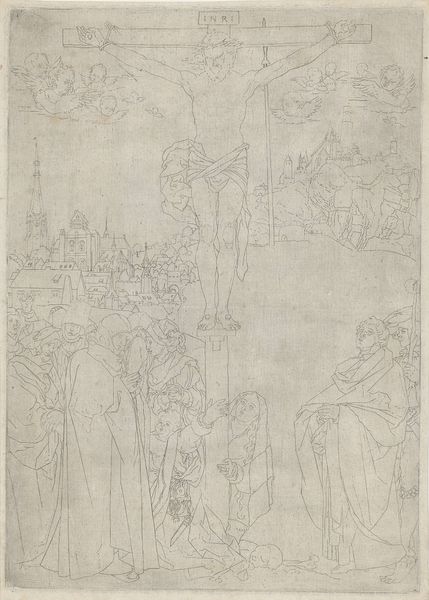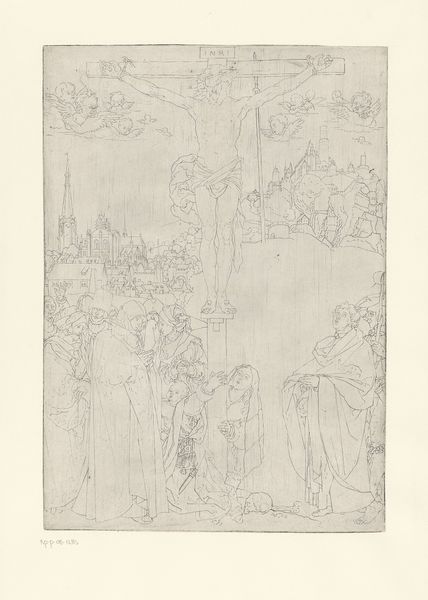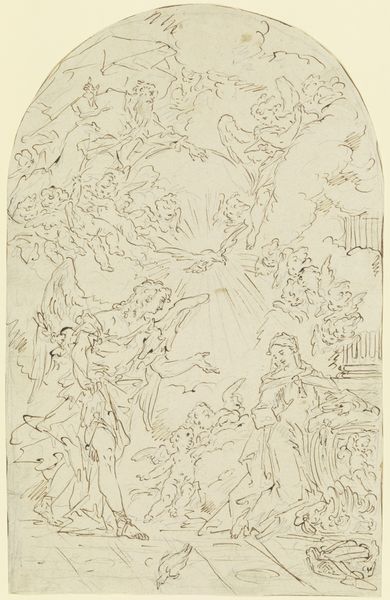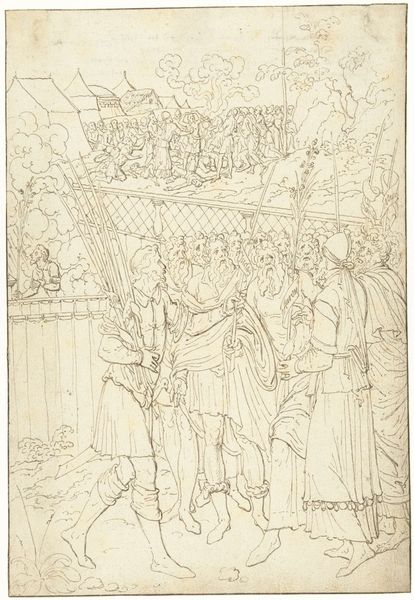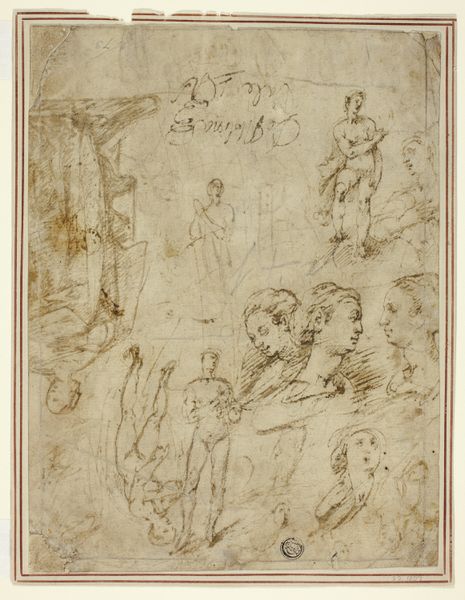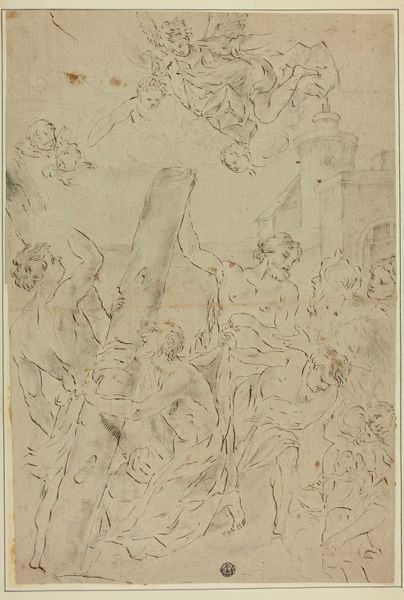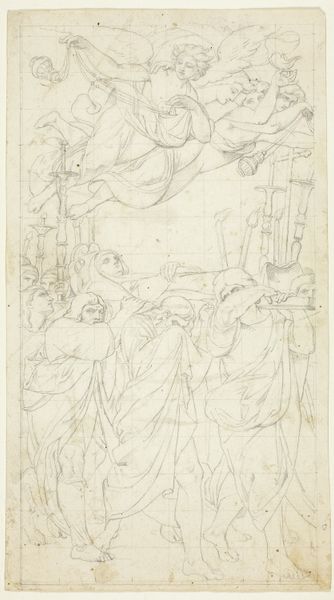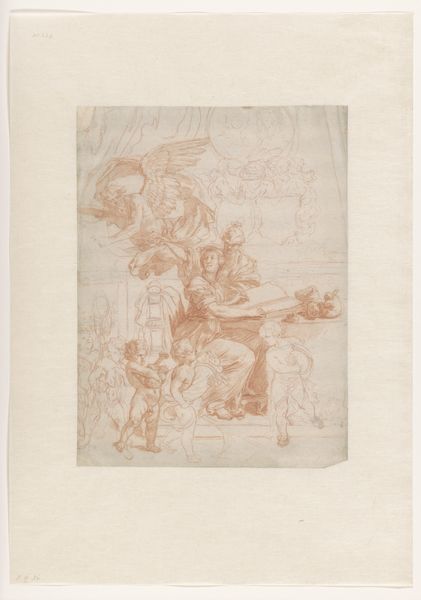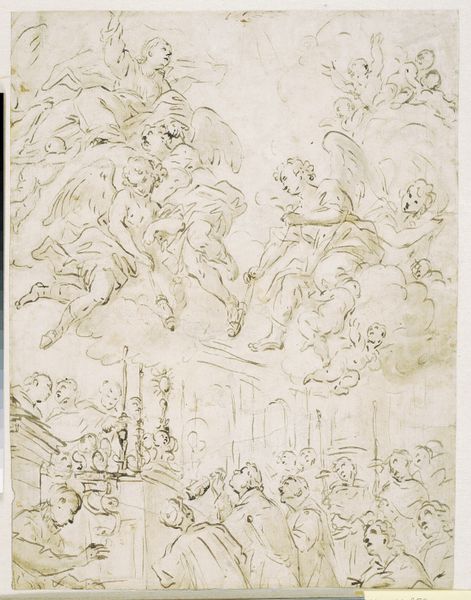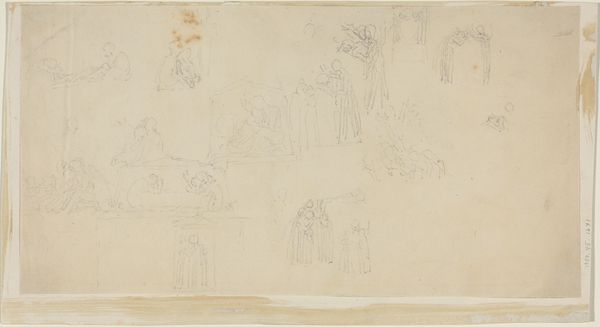
drawing, pencil
#
drawing
#
figuration
#
11_renaissance
#
pencil
#
crucifixion
#
history-painting
#
christ
Dimensions: Sheet: 12 7/16 × 8 7/8 in. (31.6 × 22.5 cm)
Copyright: Public Domain
Editor: So, here we have Durer's "The Crucifixion," created sometime between 1485 and 1600. It's a pencil drawing, and even in this sketch form, the scene is intensely moving. It really conveys a sense of suffering, but I'm also curious about its place within religious and social narratives of the time. What strikes you most when you look at it? Curator: What stands out is how Durer uses a universally recognized symbol of suffering and submission to possibly critique existing power structures of his time. We're looking at a period where the Church held immense social and political sway. Durer was operating in a society grappling with immense political and economic shifts. How does the positioning of the figures—the powerful onlookers versus those mourning at the foot of the cross—speak to you? Editor: It’s like he's highlighting the contrast between the observers in their fine robes and the emotional grief of the mourners. Curator: Exactly. And who were the mourners typically? Who was subjected to systemic injustices within religious dogma? Were there those on the fringes, denied full humanity under the very laws claiming divine origins? Durer subtly hints at those silenced voices, creating an image that serves as a quiet indictment of injustice sanctioned under the guise of faith. Editor: I hadn't thought about it in those terms. It's easy to just see it as a straightforward religious scene, but you're right. The artist is clearly highlighting the faces of both the powerful and the suffering, who were possibly very powerless in real life. Curator: Precisely. How the artist's composition provides not just an image for reverence, but becomes a site for questioning authority, inviting empathy and solidarity for those on the margins. So much so that this single sketch carries a poignant discourse. Editor: That's incredible. I'll definitely be looking at Durer—and art from the Renaissance in general—with fresh eyes from now on. Curator: Absolutely. Remember, art isn't made in a vacuum. It can hold multiple layers of critique and meaning.
Comments
No comments
Be the first to comment and join the conversation on the ultimate creative platform.
